Getting to the Core
Hello, everyone. It's the start of Core Set 2019 previews. I'm going to pull back a bit and talk about why the core sets are returning and how they're going to be similar and different from core sets of old. I even have two preview cards, one old and one new, which I promise to show off before the column is done.
Four Core and 20 Years Ago
Four years ago, R&D decided to get rid of the core sets. I wrote an article called "Metamorphosis" in which I talked about "the core set issue." I explained it had an identity problem. Who exactly was the core set for? Was it an introduction for beginners, or was it a means to give more advance players access to reprints and cards that didn't easily fit in any of the recent worlds? For years, we tried to make the answer both, and that caused us a lot of problems.
Then last year, we changed our minds and decided to bring core sets back. As I explained in my article "Metamorphosis 2.0," it wasn't until we took core sets away that we realized how much we'd relied on them for certain things: fitting in reprints that were world-specific, making cards to mechanically support themes in Standard or set up things that will eventually be relevant, helping players avoid fatigue as the core set is opt in, and most importantly, helping ramp new players into the game.
The trick was bringing core sets back in a way that did more of the things we needed them to do and less of the things we didn't. Today, I'm going to walk through each of the core set's major needs and talk about how we treated the new core sets with regard to those needs.
Need #1: Core sets need to be an introductory booster product for new players
When we removed the core sets, our thought process was that we'd make a specialty line of products that served as the perfect on-ramp to the game. Booster products have always been problematic because we don't have complete control over what order the players see the cards, which makes controlling the experience a lot harder. Our solution was to stop giving beginners randomized booster products. This way, we'd have a better control of the experience. We forgot one important thing—randomization is one of the things that makes Magic so special and fun.
Magic is a trading card game, and an important part of that is the excitement of not knowing what you're going to get when you open a booster pack. By pulling that aspect out of the beginner experience, we were taking away one of the most exciting parts of the game. Interestingly, we found beginners enjoyed the booster experience so much that when we pulled boosters out of the on-ramp experience, players just didn't follow our pathing (our terminology for getting players to use specific products in a specific order as a means to slowly ramp up and learn the game) and started opening whatever boosters they could find, which made the experience more difficult for them.
The message was loud and clear: boosters are an essential part of the game. We needed to make sure they were part of the early onboarding process. Yes, it would cause some challenges as it meant giving up some control in what order players saw things, but in return, we had a more exciting experience and, as I've explained numerous times (here being a good example), it's more important for the new player to enjoy themselves than it is for them to understand everything right away.
To solve the identity issue, R&D made the following decision. The core set's primary responsibility is being an introductory experience for new players. That doesn't mean we can't also do things for enfranchised players (and as you will see, we do), but it can't be done at the expense of new players. That philosophy led to the first big difference in how the new core sets were made.
To understand this change, let me first walk you through the beginner product pathing:
Welcome Deck -> Planeswalker Deck -> Deck Builder's Toolkit -> Cores Set

The Welcome Decks are the free 30-card decks we give stores for them to let new players sample the product. Welcome Decks are traditionally one color and tend to reduce the number of concepts to learn within any one deck. Each Welcome Deck has one rare, almost always a creature, which is meant for players to see a bigger, flavorful, and more powerful card. Welcome Decks are designed to be a good "first thing players see."
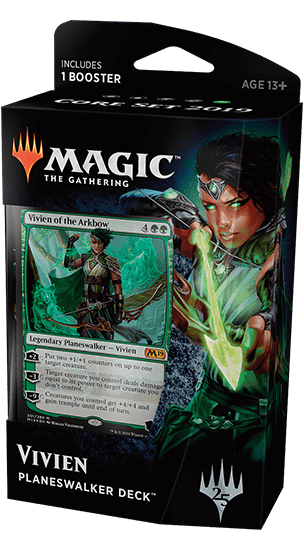
The Planeswalker Decks come out for sale with each product. They are themed to a particular Planeswalker and are preconstructed decks that tend to make use of mechanical elements found within the related set. They are designed to be a bit more complex than the Welcome Decks but still a little on the simpler side than a normal Standard deck. The Planeswalker Decks tied to the core set are meant to be even easier for a first-time player. The idea is after players see Welcome Decks, their first purchase is a Planeswalker Deck (or two if they need someone to play against), which is a preconstructed, play-ready deck.
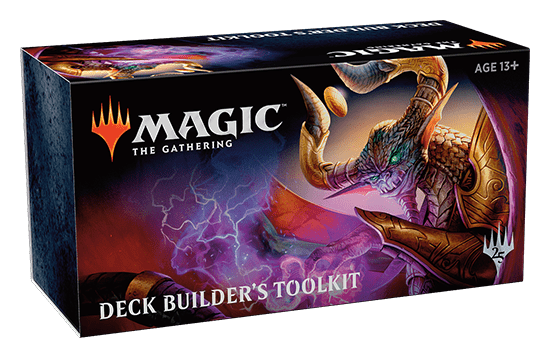
The Deck Builder's Toolkit is designed to let a new player get a lot of cards for not a lot of money. The box is filled mostly with commons and uncommons built around various themes that encourage players to build their first deck. Once they are comfortable playing preconstructed Planeswalker Decks, this allows them an easy way to build their first deck.
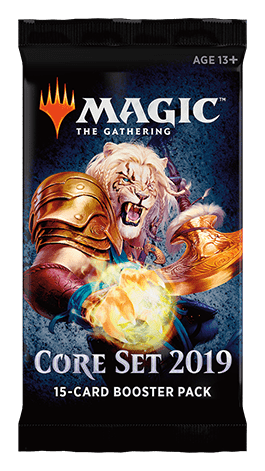
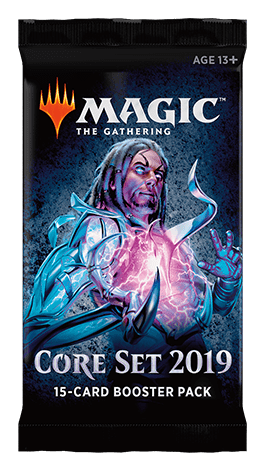
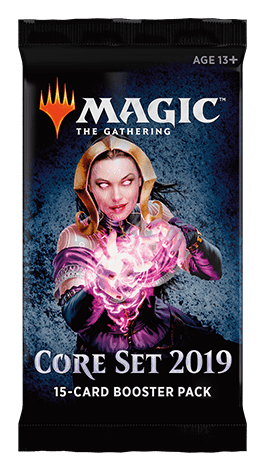
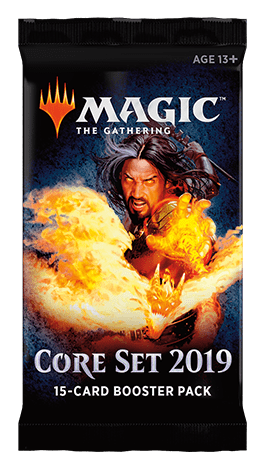
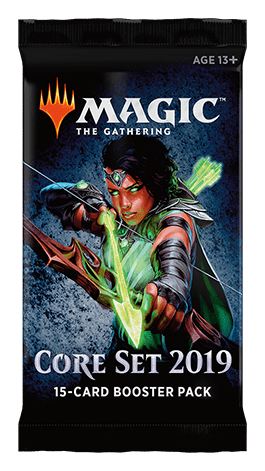
Which then brings us to the core set. This is meant to be the first booster product for the new player. Core sets tend to have overall simpler themes and provide things like reminder text for evergreen effects, which make them a bit easier to understand than our normal expansions.
In the past, Welcome Decks, Planeswalker Decks, and Deck Builder's Toolkits were made after the design of the core set was finished and made use of whatever cards they could adapt to their needs. For the new core sets, we decided to take a different approach. If the core sets were about beginners, that meant the connected products shouldn't be an afterthought. They should be an integral part of the core set's design.
So, for Core Set 2019, Ethan Fleischer and his team started by building the Welcome Decks and Planeswalker Decks. They had the freedom to design or reprint whatever cards they needed to make an optimal experience. The team then used the cards they made for those two products as a starting point around which to build Core Set 2019. Also, while building the set's themes, they were conscious of the Deck Builder's Toolkit, making sure the themes they wove in would work with that product.
This might not sound like a big change, but it's actually rather huge. Beginner products have notoriously always had to make due with whatever cards they had access to. We've learned a lot over the years about what does and doesn't work with new players, so when designers had to take less optimal cards to teach, it was never ideal. Designing the cards for the product not only meant they could mechanically match exactly what was needed, but they could also choose the most optimal creative expression of the idea. The end result of this change is why we feel the Core Set 2019 slate of beginner products is the best we've ever made.
Need #2: Core sets are best positioned to fill gaps
The goal of each expansion is to create a new and different experience. Design works hard to ensure that each set has a mechanical identity that feels distinct. This means we are very careful not just of what we include but also what we don't include. The Creative team works hard to have each set be its own unique world. Each world has its own creatures and civilizations and weapons and wardrobe. In addition, there is a story that has additional needs. On top of all that, each set has to be careful of the sets around it so that it's not stepping on the toes of what comes before or after it.
What this means is that there are a lot of parameters put on what can and can't be in a set. Even things that at first blush might feel like a perfect fit sometimes don't align once you start looking closely. This often causes us problems when we're trying to support themes in formats, especially Standard. Things that fit perfectly in Kaladesh, for example, might seem totally out of place in Amonkhet or Ixalan. The core set is the answer to this problem because its decentralized theme allows cards to exist on any plane. Need a Kaladesh card? You can make one set on Kaladesh, and thus it will feel like a perfect fit.
The new core sets have taken this idea and pushed it a bit further. Not only can we support different worlds, we can also support different themes. For example, Core Set 2019 proved to be the perfect place to design a bunch of cards aimed at Modern. Yes, they had to be created in such a way that they didn't negatively impact Standard, but the flexibility of the core set gave us the ability to make very stylized and niche designs.
We also looked for opportunities to make cards for Commander and Brawl. The set has more legendary creatures than we've traditionally done in previous core sets, including ones that branch out into multiple colors. This allowed us to add some new color combinations for Brawl, for instance.
In addition, the Play Design team took this opportunity to examine Standard and see if there were any themes that needed a little more support to become viable. They also made sure to include a few answers for things we wanted to ensure players could address if certain themes become too powerful in Standard.
This, of course, brings us back to the identity issue. Needs #1 and #2 seem like they are addressing very different audiences. How can we meet the needs of both without sacrificing the other? First off, as I said above, we've made it clear that Need #1 supersedes Need #2 if they conflict. More importantly though was the realization that Need #1 tends to be more important in the lower rarities. Following New World Order closely, for example, is crucial for a beginner product, but that's focused solely on commons. This made us realize that if we prioritize Need #1 in common and uncommon, it would let us focus more of Need #2 in rare and mythic rare.
This also led us to realize that one of the goals of the core set should be to enable simpler decks for Standard. The beginner player has no expectation to win tournaments, so we could focus on making fun themes that were viable at Friday Night Magic, decks that didn't necessarily win the night but allowed the player to get in a victory or two. As we could hand design the cards we needed, we could make sure that both the mechanics and creative were suited for the less-enfranchised player, playing into simpler mechanical themes and more resonant flavor.
Speaking of choosing cards to try and fit into older formats, I have my first preview card for today.
Click to see an old Modern-playable favorite
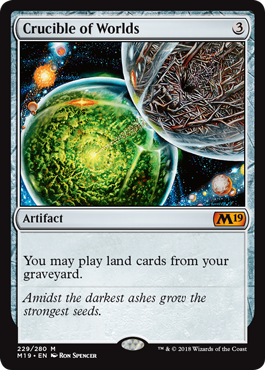
Crucible of Worlds was created by the audience as part of the second "You Make the Card" promotion. It first appeared in Fifth Dawn and was reprinted in Tenth Edition and then as a Masterpiece in Kaladesh. Players have been asking for a non-Masterpiece reprint, so Core Set 2019 steps up to deliver it.
Need #3 – Core sets should introduce the audience to the flavor of Magic as much as the mechanics
The other big change was the realization that we weren't handling the creative correctly in the core sets. In the past, the core sets were mostly devoid of flavor. It has nothing to do with the story, and the new cards tend to be designed in isolation, not tying into anything bigger in the world of Magic. For the return to the core set, we decided to handle things a little differently.
For starters, we looked for a way to specifically tie it to the story. For Core Set 2019, the decision was made to use the set to look back at the origin of the main antagonist of the current storyline, Nicol Bolas. It didn't advance the current story but allowed us to fill in a lot of information to make the audience more aware of who Nicol Bolas is and what he's done in the past. Nicol Bolas has been involved in a lot of Magic storylines over the years, and Core Set 2019 serves as a primer to help everyone get up to date on one of the game's biggest villains.
This decision influenced what legendary characters we included, what planeswalkers we selected, and what spells we made. All the choices were in the service of fitting a clean theme. Ethan likes to say Core Set 2019 was a cross between Magic 2010, which focused a lot on high fantasy resonance, and Magic Origins, which filled in information about key figures of the story.
While I'm talking about legendary creatures, I might as well show you my second preview card of the day. While the character I'm about to show you is an old favorite, the card itself is a brand-new design.
Click to see the new Palladia-Mors
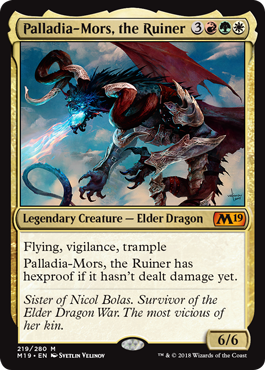
We couldn't explore Nicol Bolas's past without meeting up with the Elder Dragons from Legends (that cycle is where Nicol Bolas first appeared 24 years ago). Core Set 2019 decided to make some new three-colored commanders and redesigned all five Elder Dragons.
The creative team also used Core Set 2019 to take some peeks into the larger world of Magic and give a few hints at things that are going on around the Multiverse. Definitely take some time to look through all the cards once they're revealed.
The Core You Know
In many ways, the new core sets share a lot of similarities with core sets of the past, but these three big changes are going to lead to what we feel is a better overall core set experience, both for the newer player just being introduced to Magic and the enfranchised player who knows it well.
As always, I'm eager to get feedback from all of you, both on today's column and on Core Set 2019. Do you like the new core set and the changes we've made to it? Good or bad, let me know either through email or by contacting me through any of my social media accounts (Twitter, Tumblr, Google+, and Instagram).
Join me next week when I start my card-by-card stories of Core Set 2019.
Until then, may the core set be something you look forward to regardless of how long you've played.
#545: 20 Lessons - Feedback
#545: 20 Lessons - Feedback
38:45
This is another in my "20 Lessons, 20 Podcasts" series based on my 2016 Games Developers Conference speech. Today is lesson nineteen: "Your audience is good at recognizing problems and bad at solving them."
#546: World Identities
#546: World Identities
44:34
In this podcast, I talk about why it's important for each plane to have a distinct identity.
- Episode 544 GDS3 Check-In
- Episode 543 Stand-Up Comedy
- Episode 542 Dominaria, Part 3

